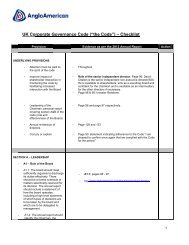pdf [ 1.1MB ] - Anglo American
pdf [ 1.1MB ] - Anglo American
pdf [ 1.1MB ] - Anglo American
You also want an ePaper? Increase the reach of your titles
YUMPU automatically turns print PDFs into web optimized ePapers that Google loves.
C0 2 from methane emissionsYear (000) tonnes Method2001 1,071 IPCC guidelines (estimated)2002 656 Underground (spot samples) and opencast (estimated)2003 610 Underground (spot samples) and opencast (estimated)2004 298 Underground continuous monitoring and opencast(estimated)2005 232 Continuous spot samples for underground and analysisof coal samples for opencastEnvironmental researchoooohalf of the total methane content of the coalwas released within the first 24 hours aftermining;there was a strong correlation betweenmethane emission rates, barometric pressureand ambient temperatures;there was no relationship between coalproduction rate and emission levels; andelevated levels of methane detected as a resultof spontaneous combustion (sponcom) weredifficult to quantify.The figures reflected in the table (left) thuscannot be used for time-based trending of methaneemissions, but are depicted for information purposes.These figures also exclude emissions from sponcom.During 2005, <strong>Anglo</strong> Coal South Africa continued tosupport the CoalTech 2020 research programme,which manages several environmental projectsincluding the colliery water irrigation project, theindigenous species plug trial, the development ofguidelines for wetland conservation in the upperOlifants catchment, and the revision of the Chamberof Mines guidelines for the rehabilitation of miningdisturbed land. These projects are all due to becompleted in 2006.The colliery water irrigation project hasclearly shown that colliery water containingsulphates can be used to increase crop yieldson the Highveld, without any detrimental effecton soils in the long-term.Two new CoalTech projects, which commencedlate in 2005, and will run for three years, involve anindigenous species seeding trial and a soil compactionalleviation trial. The indigenous species seeding trialaims to establish sustainable communities ofindigenous grass species on rehabilitated land tosupport low-input grazing systems. The compactionalleviation trial will investigate the causes of soilcompaction on rehabilitated land to reducecompaction on deeper soils.Paul Meulenbeld, theenvironmental co-ordinatorfor Goedehoop colliery,inspects pioneer speciesof grass on the recentlyrehabilitated Hope discarddump.29


![pdf [ 1.1MB ] - Anglo American](https://img.yumpu.com/49057963/31/500x640/pdf-11mb-anglo-american.jpg)
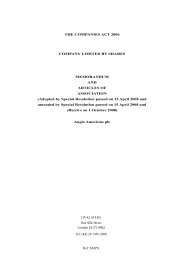
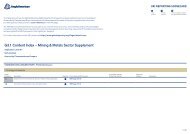
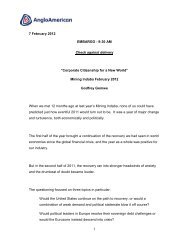
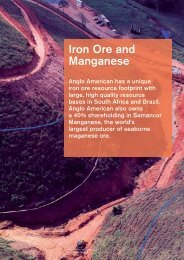
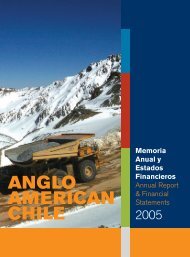
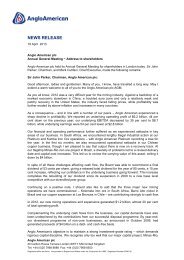
![English PDF [ 189KB ] - Anglo American](https://img.yumpu.com/50470814/1/184x260/english-pdf-189kb-anglo-american.jpg?quality=85)
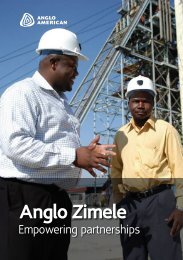

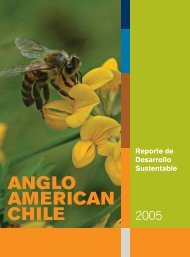

![pdf [ 595KB ] - Anglo American](https://img.yumpu.com/49420483/1/184x260/pdf-595kb-anglo-american.jpg?quality=85)
